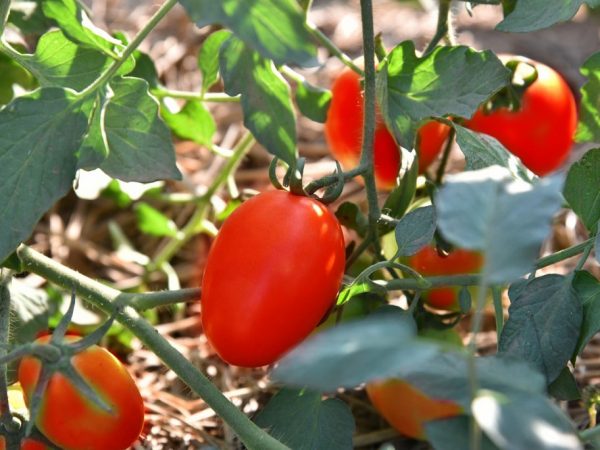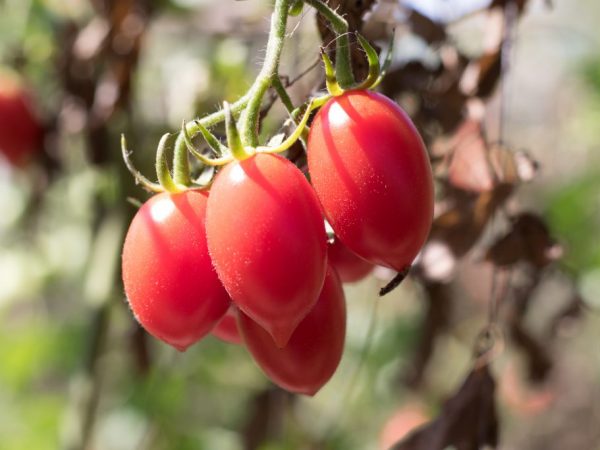Characteristics of Tomato De Barao Tsarsky
Tomato is a red vegetable beloved by adults and children in many countries. Among its varieties are sweet and sour, red, pink and green fruits. From the point of view of cultivation, they are divided according to such characteristics as more or less immune-resistant, with high yields and low, etc. The De Barao variety has several subtypes, differing in appearance and growth characteristics. In most cases, they are named after the color of the pulp and skin. The most famous variety is De Barao Red. Tomato De Barao Tsarskiy is a popular variety among farmers in our country, originally from Brazil, Ecuador and Peru, which became widespread in Russia in the 90s of the last century: in 1998 it was officially registered as a greenhouse variety, although it was introduced to the empire back in the 1600s years. What is the secret of his success?

Characteristics of Tomato De Barao Tsarsky
Description of the variety
Tomato De Barao Tsarskiy is a tall type variety, i.e. its stems can grow longer than a year and bear fruit well. Small knots can be seen between the stems. The gardener will receive fresh tomato fruits from such a plant until September. The period from planting seeds to harvesting is approximately four months.
The leaves of the plant are dark green in color, they are medium in size with simple inflorescences. With a tendency to intensive growth, De Barao can reach from one and a half to two meters in height. In rare cases, three. Such a powerful stem needs additional support, preferably trellis. One stem contains about ten racemes with seven to eight oblong dark pink fruits of medium size with spouts on each of them. In the photo you can see the bright, creamy fruits of a compact look. The two-chambered fruit of the Tsar's variety weighs about 160 g, being the largest representative among other De Barao species. Juicy and tart to the touch, the taste is sweetish. The tomato skin is thin.
Immunity of the Royal Fruit is quite resistant to environmental conditions. The yield is medium-late, sometimes even late-ripening (one of the disadvantages of the species), abundant, averaging about 13 kg per plant, subject to good care and abundant feeding. In record cases, it reaches 20 kg. The highest recorded mark is 70 kg per bush. An experienced farmer knows that if you pick green fruits, the tomato will ripen well.
Benefits
Depending on for what purpose and where you grow tomatoes, a variety with a certain characteristic is selected. Tomato De Barao Tsarsky has its pluses, which are more than minuses. Before landing, you should read the description of the main features.
- high productivity and a wide range of its application;
- strong immunity and frost resistance;
- long fruiting period;
- tendency to ripening;
- attractive appearance;
- long-term storage.
Disadvantages of the variety
A sufficient number of advantages deservedly makes the Tsar's tomato a very common fruit in domestic farms.In connection with some features of the variety, there are slight difficulties in care, which, with a competent approach, are easy to overcome.
De Barao's tall stems require roomy space around them and a solid support. You should also regularly remove curly side fruits to prevent the bush from growing in the wrong direction. For this species, this process is especially important.
Fruit crop care

The variety is resistant to late blight
With a skilled owner, any plant will bear fruit to the fullest extent of its capabilities. Thanks to the ability of the De Barao Tsarsky tomato, proposed in the description, to adapt to almost any conditions and terrain, even in not too sunny regions. (although the best harvest will still be harvested in the south). Only in areas with a specific climate, such as the far north, it is preferable to plant this variety in greenhouses: in temperate latitudes, open soil is suitable for this purpose. Not so long ago, farmers tried to grow De Barao outside the greenhouse walls and achieved quite high results, which are still inferior to harvesting from a closed area.
Sowing De Barao seeds usually starts in March. Seedlings are planted two months later, preferably in moist soil. It will take about a week for the first shoots to emerge from the ground. Plants should be planted in the amount of two copies per square meter. Top dressing De Barao consists in enriching the soil with mineral fertilizers and abundant irrigation (2.5 liters of water per day per plant), especially in the phase of intensive growth. Use the drip method. Pick off yellowed and lower leaves in time.
Overgrowing brushes should be tied up with an agronomic net, trellis or stakes. The abundance of fruits on each can lead to its fall under the weight of the weight. Also read more about pinning technology.
Ventilate greenhouses and keep them at the required temperature (15-20 degrees Celsius) and good illumination. In this way, the spread of pathogenic fungal viruses and rotting processes among the fruits can be avoided. Loosening the earth in combination with folk remedies will help get rid of harmful amphibians, and chemical preparations based on sulfur or copper will save you from parasitic insects like aphids. De Barao tomato is quite resistant to the common parasitic disease of late blight. Please note that tomatoes do not like either excessive moisture or dryness.
Conclusion
The description of the species in question allows us to say with confidence that this is the best of the many existing varieties. The royal variety is good to use both fresh, as a cut or an ingredient in salad, and for pickling, preserving and drying. They are used to make tomato juice and paste.
This variety is a good option for growing in plots. The unpretentiousness of the Tsar's variety will allow the farmer to avoid special hassle with cultivation, and the marketable appearance will cause demand among buyers in the market. The seeds can be purchased at any specialty store or at large vegetable farms. It is preferable to take a three-year-old seed. From the description it is clear that De Barao Tsarsky tomato is an excellent choice for agriculture!


